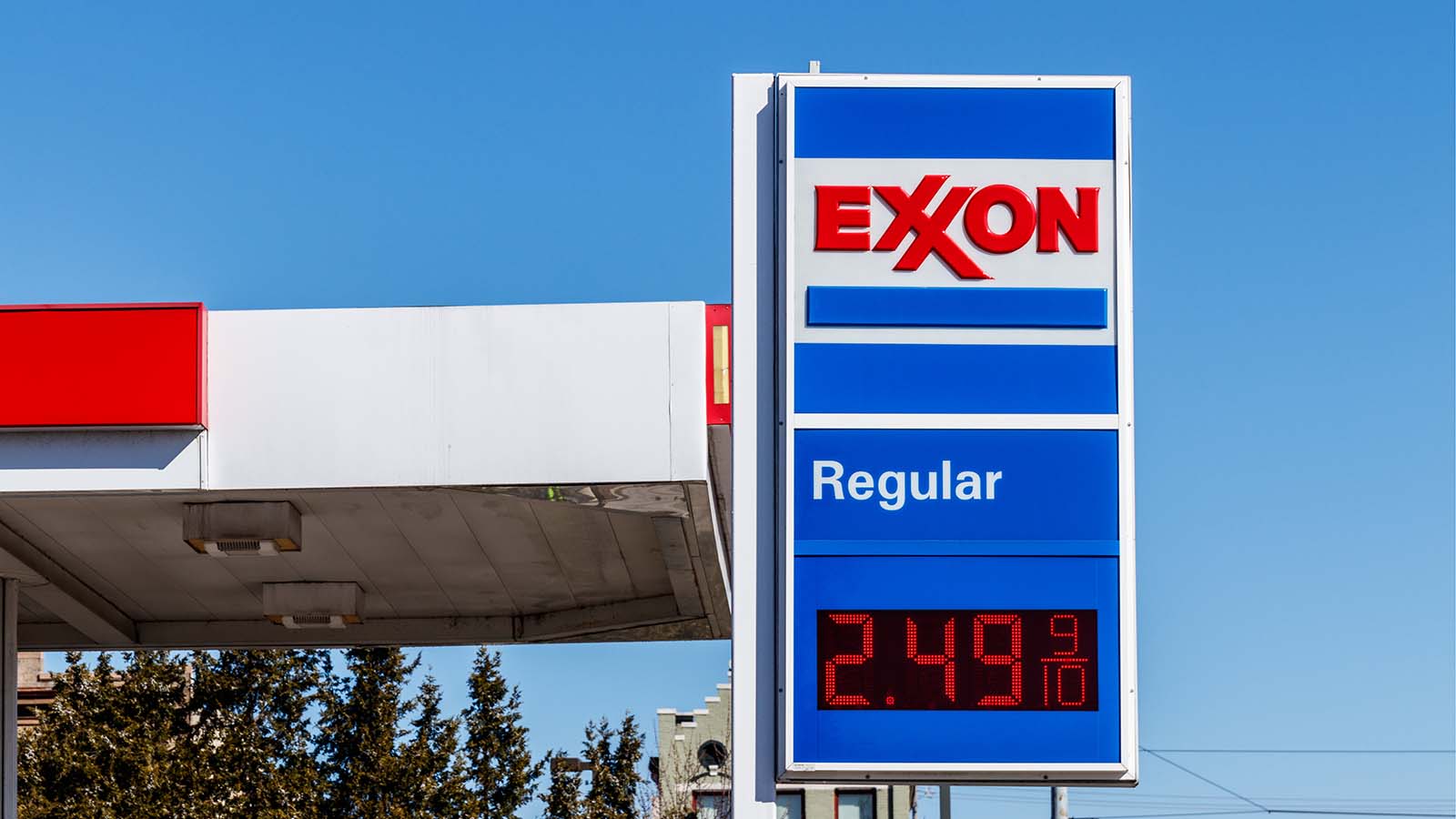For investors willing to take a risk, 2020 has offered many opportunities. Exxon Mobil (NYSE:XOM) isn’t one of them. Despite XOM stock being down 52% from the start of the year, don’t bet on Exxon Mobil shares suddenly becoming a hot commodity. Even now that oil surpluses are running dry and prices have begun to inch up.

XOM rates an ‘F’ in Portfolio Grader for good reason. The company has lost money for two straight quarters, and its guidance for the next doesn’t inspire confidence. Its dividend is being questioned.
And long term? A growing number of voices feel we’ve already hit peak oil, with nothing but sliding demand in the future.
XOM Stock Second Quarter Earnings Set the Tone
Exxon Mobil will be reporting its third-quarter earnings on Oct. 30. The company’s Q2 earnings report from the end of July should provide a preview of what’s coming. Despite the worst of the oil price war being over, Exxon Mobil still delivered a big miss. Revenue of $32.6 billion was below analyst expectations. Adjusted losses per share of 70 cents were also higher than Wall Street had been expecting.
In comparison, in the second quarter of 2019, XOM beat analyst expectations. The company posted revenue of $69.1 billion and EPS of 73 cents.
The company has filed Q3 guidance that is extremely light on good news for investors. Yes, oil prices are currently up from where they were in the second quarter, but lower natural gas prices will at least partially offset that.
Exxon says to expect lower margins to impact its refining business, along with higher logistics costs. The midpoint of its guidance for the quarter is a loss of 30 cents per share — again, significantly worse than analysts had been expecting.
Needless to say, this news had the effect of pushing XOM stock down. The direction it has been going for most of 2020.
What About the Dividend?
One of the reasons investors buy Exxon stock is its dividend. However, the sustainability of paying a dividend while the company is losing money is being called into question. At the start of October, Edward Jones Equity Research senior analyst Jennifer Rowland voiced that concern:
Given the challenging conditions, we expect a free-cash-flow shortfall during the quarter, calling into question how long the company can continue to use debt to fund its dividend.
There’s No Escaping the Dark Future For Oil and Gas
Even assuming that Exxon Mobil limps through until the pandemic’s damage is in the rearview mirror, the future isn’t pretty. It looks grim for all oil and gas companies.
At the end of September, oil traders forecast that global oil demand is unlikely to recover to pre-pandemic levels for another year and a half. And they’re getting worried about the prospect of peak oil demand. People are commuting less. Electric cars are increasing in popularity. The use of plastics — manufactured from oil — are under siege.
Amid this rapidly changing landscape, one of the world’s largest oil producers has revised its projections for peak oil demand from the mid-2030s to 2019. In other words, oil demand may never again hit the levels it was at in 2019.
The fight against global warming is also coming for the natural gas industry. With solar and wind power becoming cheaper and more widely available, the push is on to switch homes from natural gas heating to electrical.
For an oil and gas company like Exxon Mobil, it doesn’t take a psychic to read the tea leaves and predict a dark future.
Bottom Line on Exxon Stock
Exxon Mobil’s days as a growth stock are long behind it. XOM stock had been more or less treading water for the past five years and 2020 has been a disaster. With XOM now worth less than half of what it traded for at the start of the year, there would theoretically be room for upside if you bought now.
However, with the likelihood of a third straight quarterly loss, its dividend in jeopardy, and nothing but clouds on the horizon? I’d stay far away from this F-rated stock.
On the date of publication, neither Louis Navellier nor the InvestorPlace Research Staff member primarily responsible for this article held (either directly or indirectly) any positions in the securities mentioned in this article.
